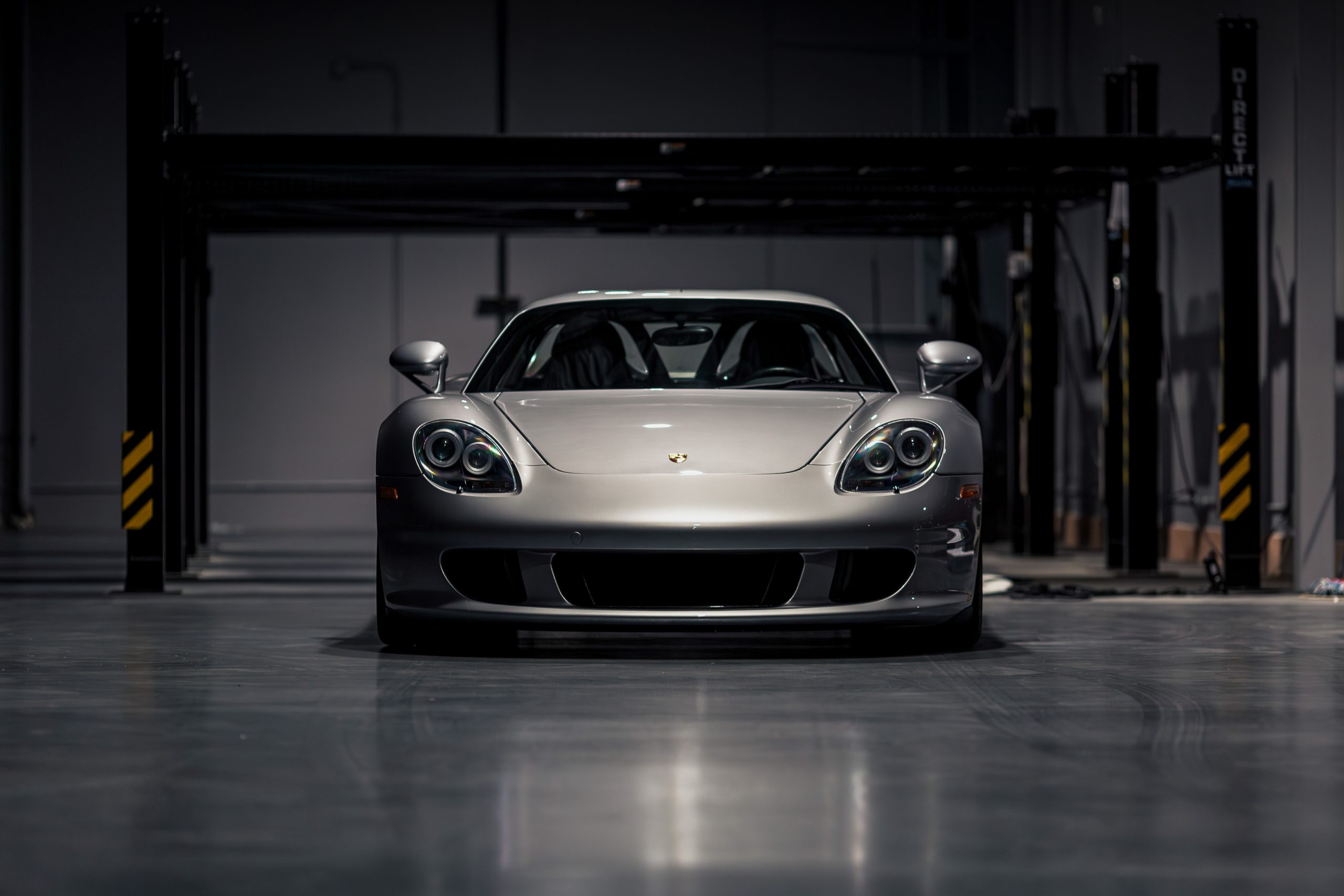Porsche Bergspyder Concept (2015)
A Boxster-Based Lightweight Concept from Porsche
A Boxster-Based Lightweight Concept from Porsche
A Pretty Perfect Open Top Sports Car
It is physically bigger, much faster and still the best sports car on the planet
Porsche is doubling the driving fun to be had from the new 911 Carrera by putting a Cabriolet alongside the Coupe
The latest generation 911 arrives and even in base form, it is a cracking car
This most-special 911 will continues the RS tradition. Lighter, faster, and more extreme.
The new GT3 even more powerful, faster, and refined than its predecessor
Double-dome roof. Retro-styled Fuchs wheels. Ducktail spoiler. YES PLEASE.
It was the most powerful and fastest roadgoing 911 Porsche ever created
Only two 993 Speedsters were ever made
An even lighter and more race-focused version of the 911 than the "standard" 911 GT3
The race-bred 911 features a 415-horsepower naturally aspirated engine with an 8,400 rpm redline
Limited-edition run of 50 built to celebrate the 50th anniversary of the Porsche Club of America
To the average Porsche customer and enthusiast, the 993 Turbo Cabriolet technically never existed
All the fun of a convertible without sacrificing the dynamic abilities of a hardtop.
Glass-roofed variant gets an update along with the rest of the Porsche 997 range
Larger, more potent six-cylinder engine. New, all-wheel-drive system from the 911 Turbo.
The all-wheel-drive, high-performance variant Carrera 4S Is the perfect all-season 911
New engine. New all-wheel drive system. Refreshed design.
Refreshed Carrera 4 lose the old multi-plate, viscous all-wheel-drive system in favor of the electronically controlled system
Like the rest of the range the Carrera S Cabriolet got a new 997.2 generation update.
Faster, edgier, sexier, better-equipped and more expensive, but it’s also cleaner, greener, more efficient
The 911 Carrera Cabriolet is a true Porsche, from top to bottom.
Now with direct-injection technology and a seven-speed, dual-clutch transmission
The Type 964 911 first launch with an all wheel drive model. It was a serious investment by Porsche in updating the chassis and tech platform.
Softer spring rates than the coupe. More leather in the cabin and better equipment. All-wheel drive security.
A Practical 911 With Strong Performance to Match
473 bhp! 460 ft lbs! 3.6 second 0-60! The Ultimate Super-GT
The Four Seasons 911
3.8-liter engine producing 350 bhp makes this the all-weather 911 king
All-wheel drive, all-weather fun.
All-weather stability and safety with a new killer stance
Makes a strong case against its coupe sibling
Fun, Fast & Worth the Extra Money Over the Base Model
The drop-top gives up little performance or structural integrity compared with the coupe version
Better looks. More power. More tech.
The second-generation Boxster (987) came to the US market as a 2005 model
Porsche heavily revised their four-wheel drive system to distribute power to the front and rear wheels.
Porsche heavily revised their four-wheel drive system to distribute power to the front and rear wheels.
Built for the United Sports Car Racing (USRC) series and its GT Daytona class for 2014
Max Hoffman convinced Porsche it needed a lightweight convertible to compete with Jaguar and Austin-Healey.
For those who want more extreme performance, handling and track-day bragging rights
Supercar Performance In a Cabriolet Body
560 bhp and 516 ft of Porsche GT Perfection
All-new 3.8-litre flat-six. Electric steering. No manual gearbox. Still one of the best sports cars money can buy
Built by Porsche to commemorate the 911’s birthday, 50 years after its production launch in 1964.
Porsche built just 875 examples of the CE or Commemorative Edition 911 Carrera
Only 50 were ever built, this is a one of seven, now listed for auction.
One Last Hurrah for the G-Series 911. One of the most underrated Porsche's ever.
The 911 Carrera 3.2 was the first 911 offering the Turbo’s look for non-turbo cars. The M491 option.
Only 200 ‘Ferry Porsche’ 911 Jubilee SCs were made
The 356 gets a race inspired 1500 cc four cam motor
The Flat-Nose 930 Turbo Is Still A Fan Favorite
The 'Weissach' edition was a standard SC with special paint
The ‘super’ version had more horsepower (70 vs the standard 60) and the powerful ‘type 528 engine’
Max Hoffmann convinced Porsche to built the 356 Speedster. A cheaper and more sporting alternative to the Coupe and Cab.
The first 911SC built to celebrate race victories for Porsche in several championships
In 1953, the 1300 S or "Super" was introduced, and the 1,100 cc engine was dropped.
Commemorating 25 years of Porsche sports car production
Porsche's competition department reworked the 1500 engine with hotter cams and bigger Carburetors, boosting power to 70 bhp.
The 1500 was Porsche’s newest engine which was quickly fitted with 40 PIBC Solex carburetors
Commemorating 25 years of Porsche sports car production
A one-off narrow-bodied mule gifted to Ferry Porsche’s sister, Louise, on her 70th birthday
In 1951, a bigger 1.3-litre Type 506 engine was announced. It marked the first significant move away from the original Volkswagen unit.
In 1974 the roadworthy motorsport 911 series continued its run.
The first Stuttgart-built 356 have later been called as 356 Pre-A.
Of the 52 cars made in Gmünd, only eight were built up as cabriolets.
With lessons learned from 356 No. 1, Porsche developed the 356/2 as a production-ready version.
The first Porsche, chasssis 356-001, was produced in Gmünd as two-seat roadster using VW parts.
Premiere: 2012 September 26, Paris motor show
The all-wheel-drive system provides between 5-40% of torque to the front wheels depending on the situation
Coming soon
The Water-Cooled Flat 6 Arrives to The Open Top 911
The Water-Cooled Flat 6 Arrives
Cabriolets came with reinforced bodyshells to compensate for the lack of a roof.
In 1982 it launched the 944 model, which used a front-engine and rear-wheel-drive. By 1991, the outdated model required a replacement. That was the 968.
Continues to be the most successful race car in the world.
2015 FIA World Endurance Cup for GT winner
The 918 Spyder concept. Electric-mobility plus stunning looks.
A reimagined Porsche 904 Carrera GTS concept
Celebrating an iconic legend.
This hybrid is unlike anything you've previously heard called a hybrid.
The 918 RSR ‘Racing Lab’ is part of a new initiative called Porsche Intelligent Performance
The 918 Spyder concept. Electric-mobility plus stunning looks.
The sweet-handling 944 was based on the Porsche 924 but with the addition of a true Porsche engine.
Carl Fausett Is At It Again
Porsche created the first prototype racecar it has designed and constructed since the 1998 24 Hours of Le Mans winning Porsche 911 GT1 as a commission.


